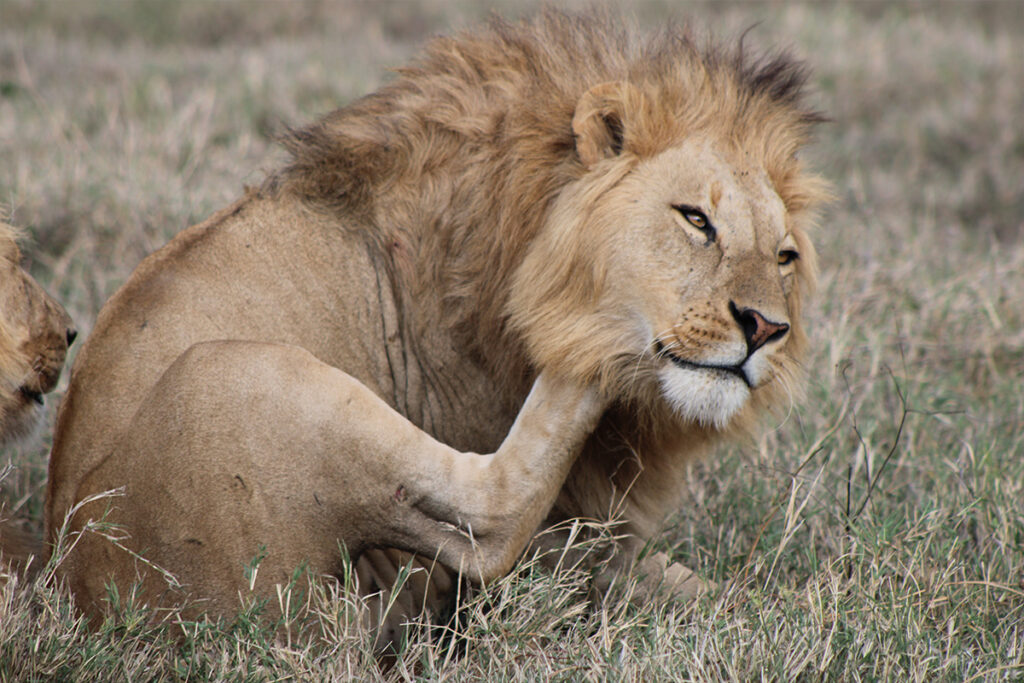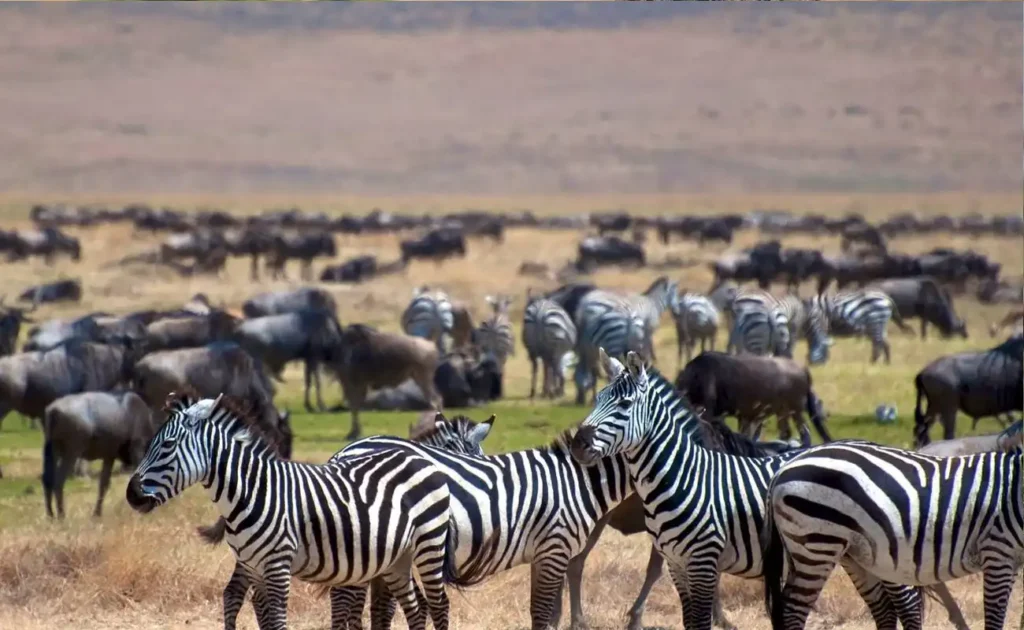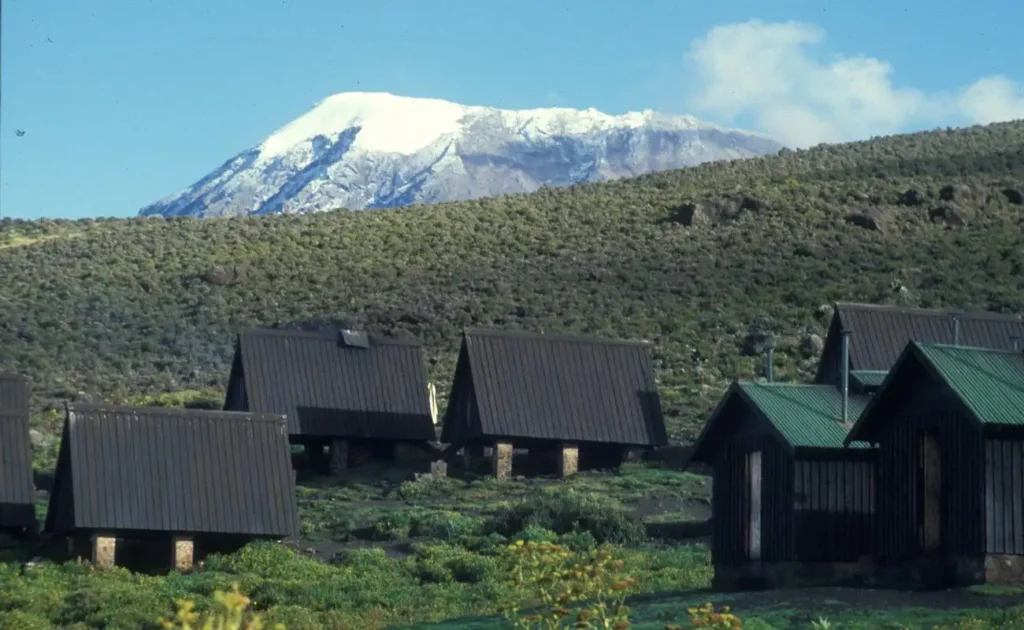Every year, over a million wildebeests thunder across the Serengeti in the mesmerizing Great Migration, a spectacle many consider the eighth natural wonder of the world. This awe-inspiring event is just the start; Tanzania’s rich landscape is home to an incredible diversity of wildlife, including the famous Big Five: lions, elephants, leopards, buffaloes, and rhinos. The allure of witnessing these majestic creatures in their natural habitat captivates every visitor, offering an experience unlike any other.
Tanzania’s safari experience is steeped in history, originating in the early 20th century when the country began protecting its wildlife reserves. Today, the country boasts 22 national parks, including the renowned Serengeti and Ngorongoro Crater, preserving some of Africa’s greatest wildlife sanctuaries. With more than 430 species of birds and countless other fascinating animals, Tanzania promises an unforgettable safari experience that is as diverse as it is extraordinary.

Discovering Tanzania’s Wildlife: A Safari Adventure
Tanzania offers a thrilling safari experience, with a range of fascinating animals. The Big Five are the most famous: lions, elephants, rhinos, leopards, and buffaloes. Each of these creatures roams freely across the savannas, creating unforgettable encounters. Watching a lion pride or a herd of elephants crossing the plains is truly awe-inspiring. This incredible diversity makes Tanzania a top safari destination.
One of the most spectacular events is the Great Migration. Every year, millions of wildebeests, zebras, and gazelles journey in a massive loop. This migration isn’t just amazing to watch, it’s a key survival strategy for these animals. Predators like cheetahs and lions follow the herds, creating dramatic hunting scenes. Witnessing this natural wonder is a once-in-a-lifetime experience for many.
Besides the Big Five and the migration, visitors can also spot unique species. Giraffes grace the horizon with their long necks and lanky legs. Hyenas often appear in the early morning or late evening, cackling with their distinct laughter. Bird watchers can delight in over 1,000 species of birds, including the African fish eagle and flamingos. Tanzania’s wildlife variety is truly remarkable.
Tanzania works hard to protect its wildlife through conservation efforts. Several national parks and reserves ensure that habitats are preserved. These efforts help maintain balanced ecosystems, benefiting both animals and local communities. By visiting, tourists support conservation funds and the local economy. This sustainable approach helps secure a future for Tanzania’s incredible wildlife.
Spotting the Big Five: Lions, Elephants, Rhinos, Leopards, and Buffaloes
The Big Five are a highlight of any Tanzania safari, each with its own incredible traits. Lions are known for their majestic appearance and social nature, often seen in groups. Watching them laze in the sun or stalk prey offers a thrilling glimpse into their world. Elephants, on the other hand, captivate audiences with their massive size and gentle demeanor. Observing a family of elephants at a waterhole is truly enchanting.
Rhinos are a rare sight, with their numbers dwindling due to poaching. Seeing these powerful creatures in the wild feels like a true privilege. They are often spotted in protected areas, where conservation efforts aim to boost their population. Leopards are elusive and stealthy, requiring keen eyes to spot their camouflaged coats. Finding a leopard lounging in a tree is an exhilarating safari moment.
Buffaloes are considered one of the most unpredictable animals in the wild. They often gather in large herds, and their formidable appearance commands respect. Watching a herd move across the savanna is both mesmerizing and humbling. Safaris offer an unprecedented opportunity to witness these animals in their natural habitat. The experience connects visitors with the wild in a profound way.
Embarking on a safari in Tanzania is a unique journey, offering countless chances to see the Big Five. The country’s diverse landscapes provide ideal settings for these animals to thrive. Safaris not only educate visitors about wildlife but also support conservation. Preserving these majestic creatures ensures future generations can also enjoy their splendor. Tanzania stands as a beacon of wildlife protection and adventure.
Observing the Great Migration: Wildebeests, Zebras, and Gazelles
The Great Migration is a breathtaking spectacle that showcases nature’s relentless cycle. Every year, over two million wildebeests, along with zebras and gazelles, traverse the Serengeti. This massive movement covers an area of around 1,200 miles in search of fresh grazing. The migration’s sheer scale and coordination are truly awe-inspiring. It’s a critical survival journey driven by instinct and seasonal rains.
Wildebeests form the heart of the migration, creating vast waves across the plains. Zebras join them, with their unique stripes providing protection through confusion. The partnership between these species is strategic, as zebras preference for longer grass complements the grazing needs of wildebeests. Gazelles often accompany the herd, benefiting from the safety in numbers. Together, they create a dynamic and thriving moving ecosystem.
Predators like lions and crocodiles follow closely, adding drama to the migration. River crossings are particularly thrilling to witness, with animals bravely facing swift currents. This perilous phase highlights nature’s fierce survival battles. Tourists gather along riverbanks, cameras ready to capture these iconic moments. The raw power and determination exhibited are both mesmerizing and humbling.
Experiencing the Great Migration first-hand is a dream for many wildlife enthusiasts. Tanzania offers some of the best vantage points to witness this natural wonder. Safaris guide visitors to optimal locations for unforgettable views. Alongside expert guides, the migration unfolds with all of its chaos and beauty. It’s a vivid reminder of the incredible resilience and interdependence within the animal kingdom.
Encountering Unique Species: Giraffes, Cheetahs, and Hyenas
Giraffes are one of the most mesmerizing animals you’ll encounter on a Tanzania safari. They are the tallest land animals, with long necks and distinctive patterns that make them stand out. Watching them gracefully glide across the savanna or nibble on acacia trees is a sight to behold. Despite their height, giraffes can run surprisingly fast when they need to. They are a symbol of elegance in the animal kingdom.
Cheetahs hold the title of the fastest land animals, racing across the plains at incredible speeds. Their slender bodies and black tear marks under their eyes make them easy to identify. Unlike other big cats, cheetahs prefer hunting during the day. This makes them an easier target for wildlife photographers seeking to capture their breathtaking hunts. Observing a cheetah in pursuit is both thrilling and heart-pounding.
Hyenas are often misunderstood, yet they play a vital role in the ecosystem as scavengers. Known for their eerie laughter, hyenas are incredibly intelligent and social animals. They live in matriarchal clans, led by dominant females. While they’re often seen scavenging, hyenas are also skilled hunters in their own right. Their adaptability allows them to thrive in a variety of environments, from savannas to deserts.
Encountering these unique species offers a richer understanding of Africa’s diverse wildlife. Giraffes, cheetahs, and hyenas each contribute to the complex web of life in the Serengeti. They demonstrate nature’s incredible adaptability, each with distinct behaviors and roles. Witnessing them in their natural habitat is an education in the beauty and balance of the wild. Safaris in Tanzania provide the perfect opportunity to experience these majestic creatures up close.
Beyond the thrill of discovery, observing these species highlights the importance of conservation. Many giraffes are facing threats from habitat loss and poaching. Cheetahs are vulnerable due to shrinking territories, while hyenas often clash with human settlements. By supporting ecotourism and conservation initiatives, visitors help ensure these unique animals continue to thrive. Each safari plays a part in protecting Tanzania’s natural heritage.
Rare and Iconic Birds of Tanzania
Tanzania is a haven for bird enthusiasts, home to over 1,000 unique species. Among these, some birds stand out because of their rarity and iconic beauty. The African Fish Eagle is one of Tanzania’s most majestic birds, often seen swooping down to catch fish. With its striking black, white, and chestnut coloration, it is easily recognizable. Its call, echoing across the water, is unforgettable.
Flamingos grace the alkaline lakes with their vibrant pink hues. Lake Natron and Lake Manyara are popular spots for these magnificent birds. In massive flocks, they form dazzling pink carpets across the water. Watching their synchronized movements is a peaceful experience. Their vivid color comes from the carotenoids in their food.
Another fascinating species is the Lilac-breasted Roller, known for its striking plumage. With colors ranging from turquoise to purple, this bird is a favorite among photographers. In flight, it performs spectacular acrobatic displays that make it even more captivating. These birds often perch on high branches, scanning for insects. They embody the playful and colorful side of Tanzania’s avian life.
The elusive Shoebill stork is a must-see for avid birdwatchers. With its prehistoric look and massive beak, it often baffles and amazes observers. Found in the country’s wetlands, spotting a Shoebill requires patience and a bit of luck. This solitary bird feeds mainly on fish, using its beak to expertly catch prey. It’s a reminder of the rich biodiversity nestled within Tanzania’s landscapes.
Tanzania’s birds are not only a joy to observe but also vital to the ecosystem. They contribute to pest control, seed dispersal, and pollination. Conservation efforts are crucial in maintaining habitats for these avian species. Birdwatching tourism supports these initiatives, ensuring a sustainable future. By appreciating these winged wonders, visitors play a role in their preservation.
Conservation Efforts and Their Impact on Wildlife
Conservation efforts in Tanzania are essential for protecting the country’s diverse wildlife. National parks and wildlife reserves play a key role in these efforts. They provide safe habitats for numerous species, from elephants to rare birds. By safeguarding these areas, Tanzania ensures that its natural beauty remains intact. These efforts also help to balance ecosystems and curb poaching.
Community involvement is a crucial aspect of successful conservation. Programs are in place to educate locals on the importance of wildlife protection. Many communities now participate in anti-poaching activities and wildlife monitoring. They benefit from eco-tourism through job creation and economic growth. This partnership creates a strong foundation for sustainable conservation.
Organizations and researchers work together to track animal populations and health. They use technology such as GPS tracking and drones to gather data. This information helps craft policies and strategies that protect threatened species. Conservation also focuses on habitat restoration, reviving areas damaged by human activities. By enhancing these habitats, more species can thrive.
Table of Key Conservation Areas in Tanzania
| Conservation Area | Key Species Protected |
|---|---|
| Serengeti National Park | Lions, Wildebeests |
| Ngorongoro Crater | Rhinos, Elephants |
| Selous Game Reserve | Buffalo, Giraffes |
Public awareness campaigns highlight the importance of wildlife conservation. Educational programs inspire young generations to become wildlife guardians. By raising global awareness, these efforts attract international support. Together, they contribute to a unified push for environmental preservation. Ensuring the survival of Tanzania’s wildlife benefits everyone, now and in the future.
Key Takeaways
- Conservation areas protect diverse wildlife habitats in Tanzania.
- Community involvement boosts local wildlife preservation efforts significantly.
- Technology like GPS aids in monitoring animal populations effectively.
- Eco-tourism supports economic growth and conservation efforts together.
- Education fosters future generations of wildlife guardians globally.
Conclusion
Tanzania’s commitment to wildlife conservation is evident through its numerous protected areas and community initiatives. These efforts not only safeguard the country’s diverse species but also support the local economy. The partnership between local communities and conservation organizations is proving effective and sustainable.
By visiting Tanzania, tourists contribute directly to these conservation endeavors. Witnessing the incredible wildlife and natural beauty encourages ongoing global support and awareness. Together, these efforts ensure that Tanzania’s unique wildlife thrives for future generations to appreciate.



